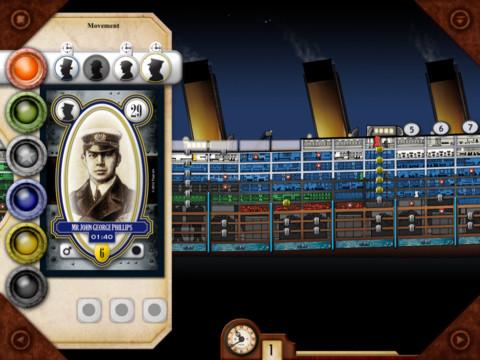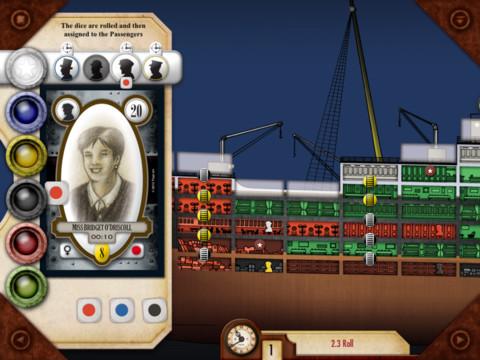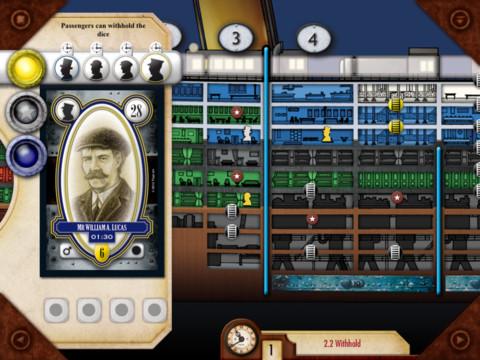- Wondering how to get Monopoly GO! free rolls? Well, you’ve come to the right place. In this guide, we provide you with a bunch of tips and tricks to get some free rolls for the hit new mobile game. We’ll …
Best Roblox Horror Games to Play Right Now – Updated Weekly
By Adele Wilson
Our Best Roblox Horror Games guide features the scariest and most creative experiences to play right now on the platform!The BEST Roblox Games of The Week – Games You Need To Play!
By Sho Roberts
Our feature shares our pick for the Best Roblox Games of the week! With our feature, we guarantee you'll find something new to play!Type Soul Clan Rarity Guide – All Legendary And Common Clans Listed!
By Nathan Ball
Wondering what your odds of rolling a particular Clan are? Wonder no more, with my handy Type Soul Clan Rarity guide.
Collapsible D: The Final Minutes of the Titanic Review
In my life as a board gamer I have seen many titles with peculiar themes. Cannibalism, programming in C and war profiteering rank high amongst them. But I don’t think I’ve ever played a game with such an unexpected theme as Collapsible D: The Final Minutes of the Titanic, which simulates the sinking of the Titanic.

Collapsing under its own interface
In my life as a board gamer I have seen many titles with peculiar themes. Cannibalism, programming in C and war profiteering rank high amongst them. But I don’t think I’ve ever played a game with such an unexpected theme as Collapsible D: The Final Minutes of the Titanic, which simulates the sinking of the Titanic.
Players have a roster of passengers which they must move up through the ship toward lifeboats before the rising waters claim them. They do this by rolling dice, requiring coloured faces that match the target square. If they make it ahead of the flood there’s then a nervous wait to see if the lifeboat will actually take them: each has a limited capacity for passengers of different genders and social class. But this isn’t revealed until the boat is ready to launch, so you may be disappointed. The aim is to get as many of your passengers off alive as you can.
That description should make clear that there’s a very heavy random element to this game. You have limited control over dice, and later in the game panicked crowds appear on board which you can manipulate to slow the progress of your fellow passengers. There are face-down items to collect which add to your score or facilitate your escape. But lucky rolls still rule the day.
The real killer is the unknown quantities that are the lifeboats. You can get all your passengers on deck in record time, and still find none of them actually able to reach the sanctuary of a lifeboat. There is some strategy and control for the player, but it’s pretty limited.
You’ll do well to get far enough to discover that for yourself. The app is a lovely looking thing, filled with gloriously intricate shipboard detail, and it does a fine job of making a colossal board playable on a small screen. It also offers some competent AI players, or the chance to play hot seat against other humans. But in every other respect the usability is atrocious.
There’s no tutorial. There are phase-by-phase hints but these are, staggeringly, turned off by default and so brief as to be useless. So you’ll have to read the rules which are badly explained and presented in a tiny window in the middle of the screen. I eventually resorted to downloading and reading the original game rules in order to play.
Once you’ve got the mechanics down it is, quite incredibly, not even obvious how to start the game. Small buttons to start, stop and move on the game turn have been cunningly hidden in the screen corners by making them the same colour as the background. They’re referred to frequently in the rules, but not once does it tell you where they actually are.
So, faced with a highly random game that’s been made extremely difficult to actually play, you might assume this is a complete write-off. But it has a most unusual saving grace.
Gaming is often a bloodthirsty business, in which players routinely murder millions at the touch of a button. Often this goes hand in hand with historical simulation, such as games depicting action from past warfare. But it rarely bothers us. They’re just digital playthings which makes little attempt to remind us of the horrific reality underpinning our enjoyment.
Collapsible Don the other hand, improbably manages to worm its way under your skin in a most uncomfortable manner. It’s the little touches of personality that do it. Taking a lost child under your wing becomes not a gesture of humanity in a crisis, but a passport to a guaranteed place on a lifeboat. Finding a gun is not a way to impose order on the chaos but a means to terrify others into getting out of your way. Being young or female aren’t facts of biology, but leverage over your fellow passengers.
The results can be startlingly macabre, as passengers stampede wildly for the exits, never hesitating to sink to the lowest behaviours to gain the smallest edge. Few games even attempt to be as personal as Collapsible D, let alone succeed in such an impressive fashion. For that, it deserves some credit.
But not much. Ultimately this is sold as a game app, and on that level it fails abysmally, being neither accessible nor interesting. It’s something you might play a few times for its value as a historical and human curio, but then forget. And given the relatively high price, such a short lifetime means it can’t be recommended as a value for the money.

The good

The bad
More articles...
Monopoly GO! Free Rolls – Links For Free Dice
By Glen Fox
Wondering how to get Monopoly GO! free rolls? Well, you’ve come to the right place. In this guide, we provide you with a bunch of tips and tricks to get some free rolls for the hit new mobile game. We’ll …Best Roblox Horror Games to Play Right Now – Updated Weekly
By Adele Wilson
Our Best Roblox Horror Games guide features the scariest and most creative experiences to play right now on the platform!The BEST Roblox Games of The Week – Games You Need To Play!
By Sho Roberts
Our feature shares our pick for the Best Roblox Games of the week! With our feature, we guarantee you'll find something new to play!Type Soul Clan Rarity Guide – All Legendary And Common Clans Listed!
By Nathan Ball
Wondering what your odds of rolling a particular Clan are? Wonder no more, with my handy Type Soul Clan Rarity guide.








 “
“ “
“